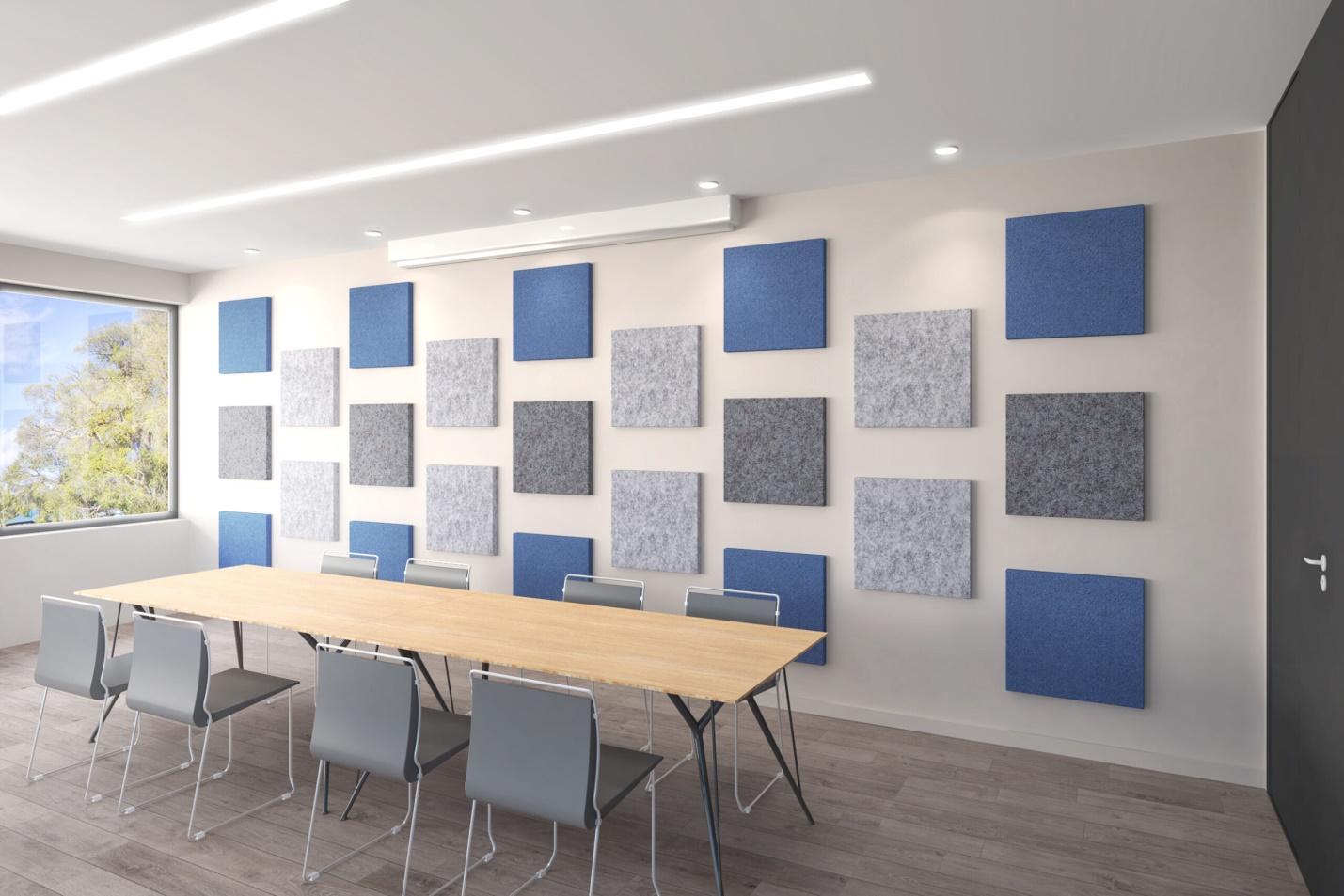Are you tired of hearing echoes and reverberations in your home or workplace? This article will explore the various benefits of acoustic panels and how they can help to improve sound quality within your space. We’ll look at the different types of Acoustic panels available, what they do and how they work, plus some tips on getting the best out of them. Read on to learn more!
Introduction to Acoustic Panels
If you’re looking to improve the sound quality in your home or recording studio, acoustic panels are a great way to do it. But what exactly are acoustic panels? And how do they work? In this article, we’ll answer those questions and more, so you can decide if acoustic panels are right for you.
Acoustic panels are made of sound-absorbent material that helps to reduce echoes and reverberation in a room. They’re often used in recording studios, concert halls, and other spaces where sound quality is important. By absorbing excess sound waves, acoustic panels can make a space sound cleaner, clearer, and less “echo-y.”
There are a few different types of acoustic panels available on the market. The most common type is made of fiberglass insulation sandwiched between two layers of fabric. This type of panel is effective at absorbing mid- and high-frequency sounds. Another type of panel is made of rock wool or denim, which is better at absorbing low-frequency sounds.
Acoustic panels can be mounted on walls or ceilings using special hangers or adhesives. They can also be freestanding, so they can be moved around as needed. Most panels come in standard sizes like 2×4 feet or 4×8 feet, but custom sizes are also available.
Whether you’re looking to improve the sound quality in your home theater or recording studio, acoustic panels
Benefits of Installing Acoustic Panels
There are many benefits to installing Acoustic panels in your home or office. Perhaps the most obvious benefit is that it can improve the sound quality of your space. Acoustic panels can help to reduce echoes and reflections, making your space more comfortable to be in and improving the clarity of speech and music.
In addition to improving sound quality, acoustic panels can also help to reduce noise levels. If you live in a busy area or work in an open-plan office, acoustic panels can help to create a more peaceful environment where you can concentrate better. In fact, studies have shown that reducing noise levels can lead to increased productivity.
Acoustic panels can also help to improve the acoustics of a room for recording purposes. If you have a home studio or practice space, acoustic panels can make a big difference in the quality of your recordings.
Finally, acoustic panels can also be used for aesthetic purposes. They come in a variety of colors and finishes, so you can find something that matches your décor. Acoustic panels can also be used as part of a larger artwork installation or simply hung on walls as standalone pieces.
How to Choose the Right Acoustic Panels
When it comes to acoustic panels, there are a few things you need to keep in mind in order to choose the right ones for your space. The first thing to consider is the size of the room. The bigger the room, the more acoustic panels you’re going to need. Another thing to keep in mind is the shape of the room. A rectangular room will require more panels than a square room.
The next thing you need to consider is the type of material you want your panels to be made out of. There are a variety of materials available, each with their own benefits. For example, foam panels are great for absorbing low frequency sounds, while fiberglass panels are better at absorbing high frequency sounds.
Once you’ve considered all of these factors, you can start shopping around for acoustic panels. There are a number of online retailers that sell them, so take your time and find the best deal.
Installation Tips
When it comes to improving the sound quality in your home or office, acoustic panels are a great option. Not only do they help to absorb excess noise, but they can also add a bit of style to your space. If you’re thinking about adding some acoustic panels to your space, here are a few tips to keep in mind during the installation process:
- Make sure you measure the area where you’ll be installing the panels before you purchase them. This will ensure that you get the right size panels for the space.
- If possible, try to install the panels on an existing wall or ceiling rather than creating a new frame for them. This will save you time and money during the installation process.
- When attaching the panels to the wall or ceiling, use screws or nails that are specifically designed for acoustic panel installation. This will ensure that the panels are securely attached and won’t fall down over time.
- Once the panels are in place, take a step back and assess how they look in the space. If necessary, trim any excess material from around the edges of the panel so that it looks neat and tidy.
By following these tips, you can ensure that your acoustic panels are installed properly and will look great in your space!
Maintaining Acoustic Panels
Acoustic panels are a great way to improve the sound quality of your home theater or music studio. But like any other piece of equipment, they need to be properly maintained in order to continue functioning at their best. Here are a few tips on how to keep your acoustic panels in tip-top shape:
- Clean them regularly. Acoustic panels can attract dust and other particles over time, so it’s important to give them a good cleaning every now and then. Use a soft cloth or brush to gently remove any build-up from the surface of the panels.
- Inspect them for damage. Occasionally check your acoustic panels for any signs of damage, such as holes, cracks, or loose connections. If you notice any damage, immediately make repairs or replacements as necessary.
- Store them properly when not in use. When you’re not using your acoustic panels, be sure to store them in a dry, temperature-controlled environment. This will help prevent any warping or deterioration over time.
By following these simple tips, you can help ensure that your acoustic panels remain in good condition for many years to come!
Alternatives to Acoustic Panels
If you’re looking for an alternative to acoustic panels, there are a few options available. One option is to use sound-absorbing materials, such as carpet or curtains, to help reduce noise. Another option is to use sound-reflecting materials, such as mirrors, to help improve the sound quality in a room. Finally, you can also try using a combination of both sound-absorbing and sound-reflecting materials to create the best possible acoustic environment.
Conclusion
Acoustic panels can be a great way to improve the sound quality of any room, from home recording studios to conference rooms. Investing in acoustic treatment such as acoustic panels can make a huge difference in how your space sounds and is worth considering if you are looking for better sound clarity and reverberation control. With so many options available, it’s important to do research on the different types of panels and consider what best fits your needs before making a purchase. Ultimately, utilizing acoustic treatments like acoustic panels can help create an environment with superior sound quality that will last for years.



































